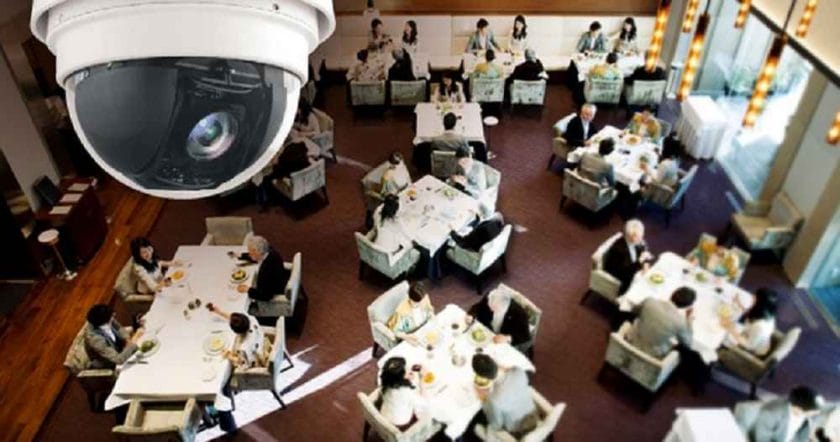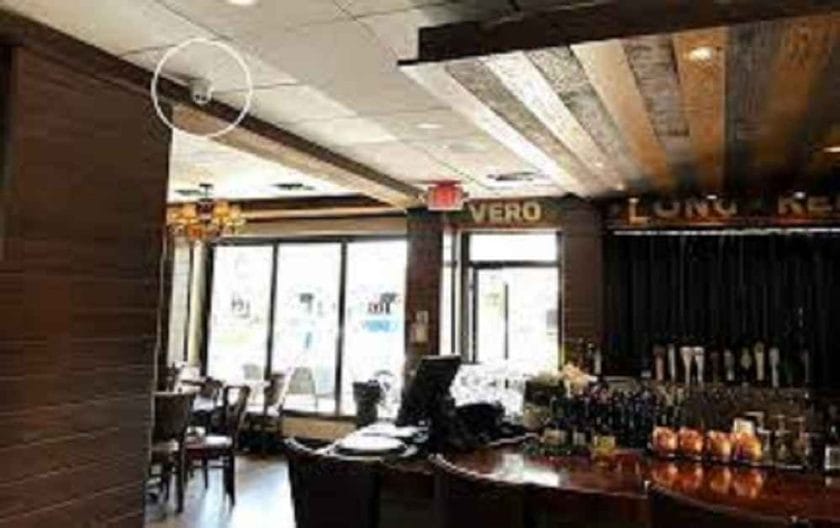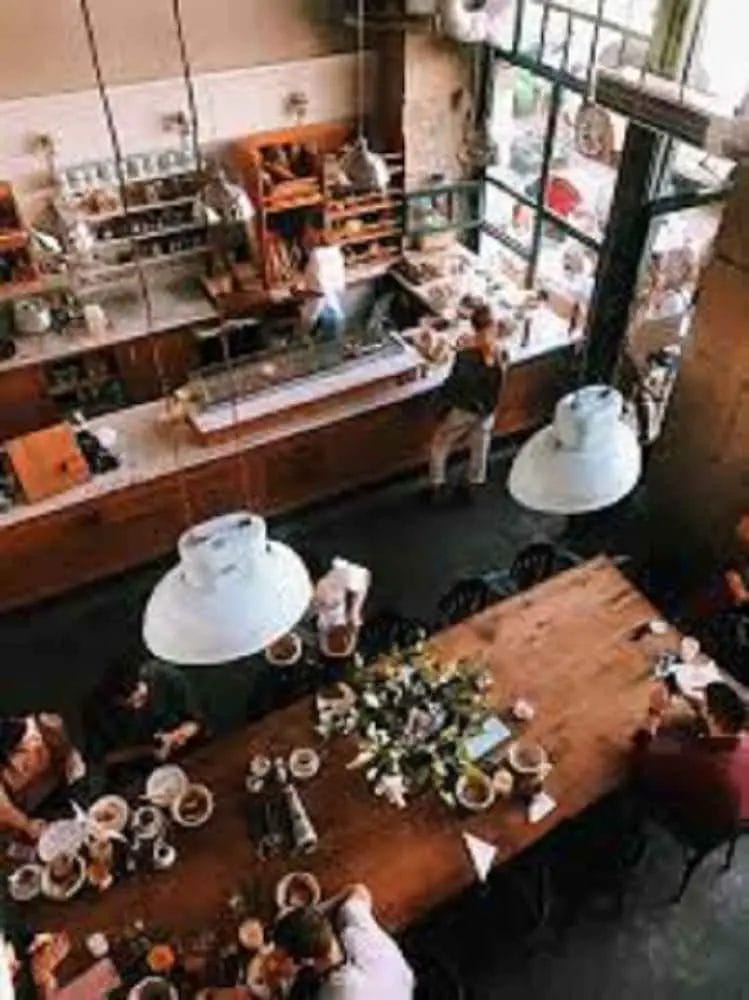The use of cameras in public places has become increasingly popular in recent years. Cameras are installed for a variety of reasons, including security, safety, and quality control.
This article provides a comprehensive overview of whether restaurants have cameras, why restaurants have cameras, the types of cameras used, and legal considerations that come with camera usage.
Whether you’re a restaurant owner or a customer, this article will help you to understand the importance, purpose, and usage of cameras in restaurants.
Do Restaurants Have Cameras?
This depends on several factors, which include the standard and financial capacity of the restaurant. However, it’s fine to say that some restaurants have cameras installed while some don’t.
Nevertheless, all restaurants will definitely benefit from the surveillance system offered by cameras.
Reasons why Restaurants have Cameras
Security and Safety
The primary reason for installing cameras in restaurants is security and safety. Restaurants are vulnerable to theft, robbery, and other crimes, and cameras can help deter these incidents.
They can also provide evidence in the event of a crime. Additionally, cameras can be used to monitor the safety of customers and employees, ensuring that everyone is protected.
Prevention of Theft and Fraud
Cameras can help prevent theft and fraud by employees or customers. They can monitor cash registers and other areas where money is handled to ensure that transactions are conducted properly and that no money is being stolen.

Monitoring Food Quality and Preparation
Restaurants use cameras to monitor food quality and preparation. This includes monitoring the handling of raw food, the preparation process, and the storage of food.
This helps ensure that the food being served to customers is safe and of high quality.
Record Evidence for Legal Purposes
In the event of a dispute or legal issue, cameras can provide valuable evidence. For example, if a customer makes a claim about food quality or a disagreement between employees, the footage from the cameras can be used to resolve the issue.
Employee Training
Finally, cameras can be used for employee training. This includes showing employees proper techniques for preparing food, handling customer interactions, and other important tasks.
Types of Cameras Used in Restaurants
Dome Cameras
Dome cameras are commonly used in restaurants due to their discreet and stylish design. They are usually mounted on the ceiling and provide a 360-degree view of the area they are monitoring.
PTZ Cameras
PTZ (pan-tilt-zoom) cameras allow the user to remotely control the camera’s viewing angle. This makes them useful for monitoring multiple areas of the restaurant from one location.
Hidden Cameras
Hidden cameras are used for covert surveillance, typically for monitoring employees or to catch theft or fraud.
Wireless Cameras
Wireless cameras are becoming increasingly popular in restaurants due to their ease of installation and flexibility. They can be placed anywhere in the restaurant without the need for wiring.
4K Cameras
4K cameras provide high-quality footage with four times the resolution of traditional HD cameras. This makes them useful for restaurants that want to monitor food quality and preparation in detail.
Legal Considerations of Using Cameras in Restaurants
Privacy Laws and Regulations
When it comes to using cameras in restaurants, it’s important to be aware of privacy laws and regulations. In most countries, it’s illegal to record individuals without their consent.
As a result, restaurants must inform customers that they are being recorded and where cameras are located.
Some jurisdictions also have specific laws regarding the use of cameras in areas where individuals have a reasonable expectation of privacy, such as bathrooms or changing rooms.
Obligations to Inform Customers of Camera Use
Restaurant owners have an obligation to inform customers of camera use. This can be done through signage, announcements, or other means.
It’s important to be clear about the purpose of the cameras and what customers can expect. For example, if cameras are used for security purposes, customers should be informed that they may be recorded if they engage in criminal activity.
Proper Placement and Use of Cameras
It’s also important to properly place and use cameras in restaurants. For example, cameras should not be placed in areas where customers have a reasonable expectation of privacy, such as bathrooms or changing rooms.
Additionally, cameras should not be used for discriminatory purposes, such as monitoring certain customers or employees based on race, gender, or other protected characteristics.
Data Storage and Protection
Finally, it’s important to consider the storage and protection of data collected by cameras. This includes the proper storage of footage, who has access to it, and how long it is kept.
Restaurants should also have policies in place to protect the privacy of customers and employees.
Best Practices for Using Cameras in Restaurants
Proper Installation and Maintenance
Cameras should be properly installed and maintained to ensure that they are functioning correctly. This includes regular cleaning, updates, and testing to ensure that the cameras are capturing high-quality footage.
Integration with Security Systems
Cameras can be integrated with other security systems, such as alarms and access control systems, to provide a more comprehensive security solution. This can help enhance security and safety in the restaurant.
Access Control and Monitoring
Access control and monitoring should be in place to ensure that only authorized individuals have access to camera footage. This can be achieved through passwords, encryption, or other security measures.
Employee Training
Finally, it’s important to train employees on the proper use of cameras and privacy policies. This includes educating employees on their rights and obligations with regards to privacy and the use of cameras.

Conclusion
In conclusion, cameras have become an important part of many restaurants for security, safety, and quality control. Understanding the different types of cameras used, as well as the legal considerations, is important for both restaurant owners and customers.
By properly installing, maintaining, and using cameras, restaurants can ensure that they are providing a safe and secure environment for customers and employees.
Additionally, by following best practices, restaurants can ensure that they are respecting the privacy rights of their customers and employees.
Can cameras be used to monitor employees in restaurants?
Yes, cameras can be used to monitor employees in restaurants. However, it’s important to be aware of privacy laws and regulations and to inform employees of camera use.
Cameras should not be used for discriminatory purposes, such as monitoring certain employees based on race, gender, or other protected characteristics.
Is it necessary to inform customers that cameras are being used in a restaurant?
Yes, it is necessary to inform customers that cameras are being used in a restaurant. This can be done through signage, announcements, or other means. Customers have a right to know that they are being recorded and for what purpose.
Can cameras be placed in areas where customers have a reasonable expectation of privacy, such as bathrooms or changing rooms?
No, cameras should not be placed in areas where customers have a reasonable expectation of privacy, such as bathrooms or changing rooms.
This is in accordance with privacy laws and regulations, as well as best practices for the use of cameras in restaurants.
Who has access to the data collected by cameras in restaurants?
Access to data collected by cameras in restaurants should be restricted to authorized individuals only. This can be achieved through passwords, encryption, or other security measures.
Restaurant owners should also have policies in place to protect the privacy of customers and employees.
How long is camera footage kept in restaurants?
The length of time that camera footage is kept in restaurants can vary. Some restaurants may keep footage for a few days, while others may keep it for several months.
It’s important to consider the storage and protection of data collected by cameras, as well as to have policies in place for how long footage is kept.

